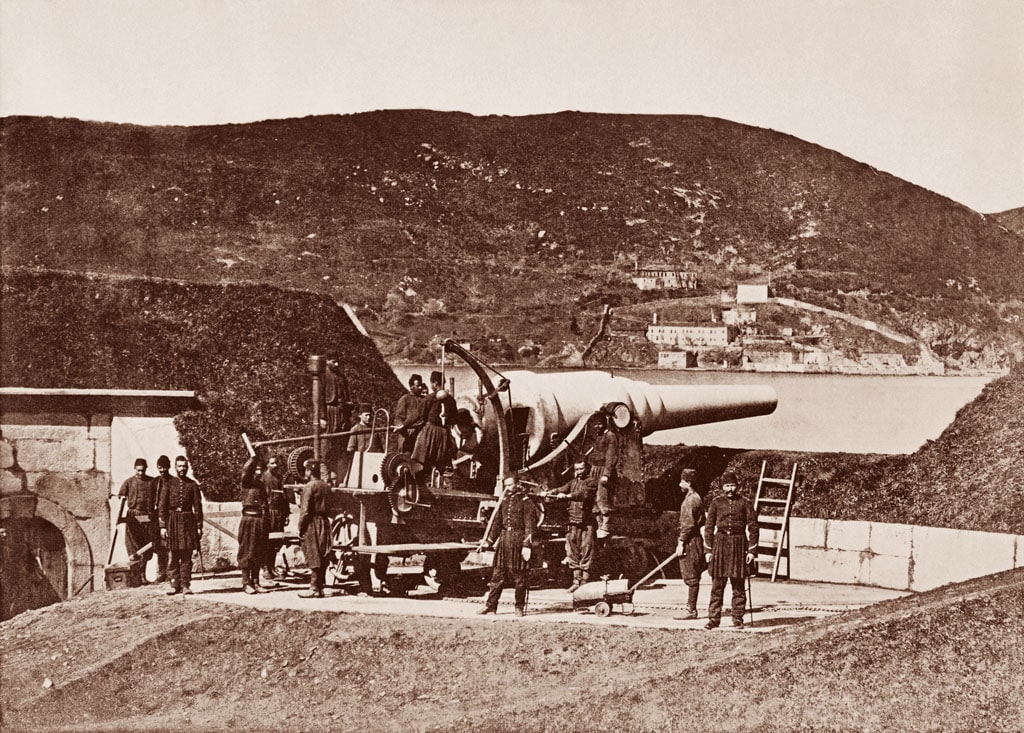12 March 2012

Küçüksu Pavilion, 1892 – 1893, Guillaume Berggren No.43, Albumen paper, 251 x 200 mm

Mâ-i Cârî (Magyar) Tabyasi, 1870, Guillaume Berggren, Albumen paper, 32 x 95 mm
Berggren acquires the techniques of photography in Berlin and holds different jobs in various European cities before arriving in İstanbul. Initially en route to Marseille, he disembarks from his ship in 1866 and settles in İstanbul, where he is to spend the rest of his life. In 1870, he opens a studio at 414, Grand Rue de Péra (present-day Istiklal Caddesi). He sends for his niece Hilda Ullin, who arrives from Sweden in 1883 to asist him. Prior to his monetary problems Berggren works intensely until 1900 and documents the recent developments in the modernizing Ottoman Empire, the shores of the Bosphorus, the streets of the city and its peoples through captivating compositions revealing his technical skills. To sustain himself for some time, he takes portraits, photographs of tourists and sells clichés to magazine. In 1914, he is forced to disperse his archieve for financial reasons and eventually dies in poverty at the age of 85.
From Konstantiniyye to Istanbul: Photographs of the Anatolian Shore of the Bosphorus from the mid XIXth Century to XXth Century exhibition showcased works by masters of photography, who practiced their art in İstanbul. Comprised from a selection of photographs from the Suna and İnan Kıraç Foundation Photography Collection and from private collections, it revealed the magnificent structures, daily life and intriguing personalities of an İstanbul past. İstanbul has evolved into an industrial city, an enormous metropolis: its silhouette, architecture, vehicles, bridges, quays, streets and public spaces have attained an entirely different appearance.
--
Istanbul has always been an inspiration to artists. Merih Akoğul and Derya Türkan put together a playlist on Spotify which consists of tracks inspired by or inspired in İstanbul. Enjoy listening to the sound of this old city!

Ali Sami is born in Rusçuk in 1866, and moves to İstanbul. Because his family is registered in the Beylerbeyi quarter of Üsküdar, Ali Sami is also called Üsküdarlı Ali Sami. He graduates from the Mühendishane-i Berri-i Hümayun in 1866 and becomes a teacher of painting and photography at the school.

Following the opening of his studio, “El Chark Societe Photographic,” on Beyoğlu’s Postacılar Caddesi in 1857, the Levantine-descent Pascal Sébah moves to yet another studio next to the Russian Embassy in 1860 with a Frenchman named A. Laroche, who, apart from having worked in Paris previously, is also quite familiar with photographic techniques.

The Suna and İnan Kıraç Foundation’s Orientalist Painting Collection includes two children’s portraits that are often featured in exhibitions on the second floor of the Pera Museum. These portraits both date back to the early 20th century, and were made four years apart. One depicts Prince Abdürrahim Efendi, son of Sultan Abdulhamid II, while the figure portrayed on the other is Nazlı, the daughter of Osman Hamdi Bey.
Tuesday - Saturday 10:00 - 19:00
Friday 10:00 - 22:00
Sunday 12:00 - 18:00
The museum is closed on Mondays.
On Wednesdays, the students can
visit the museum free of admission.
Full ticket: 300 TL
Discounted: 150 TL
Groups: 200 TL (minimum 10 people)